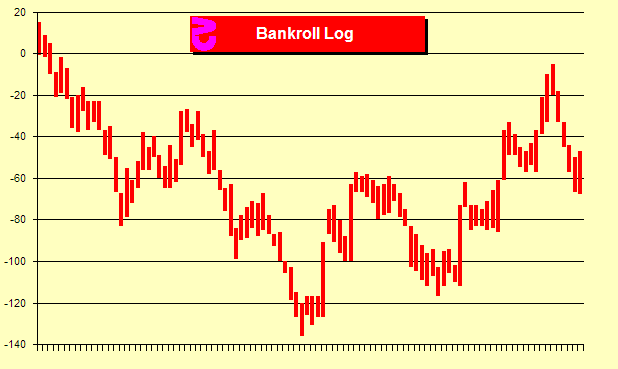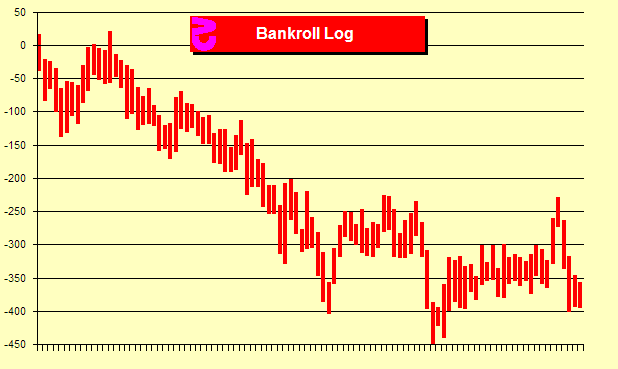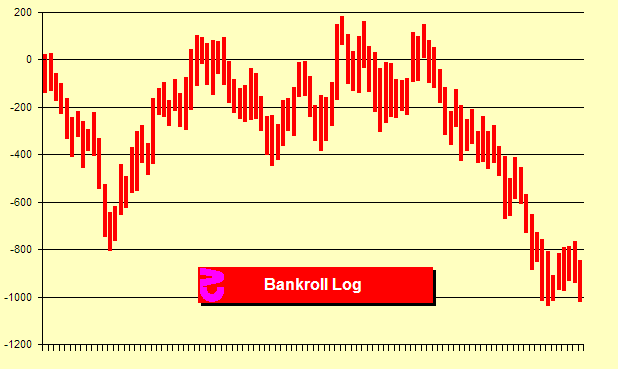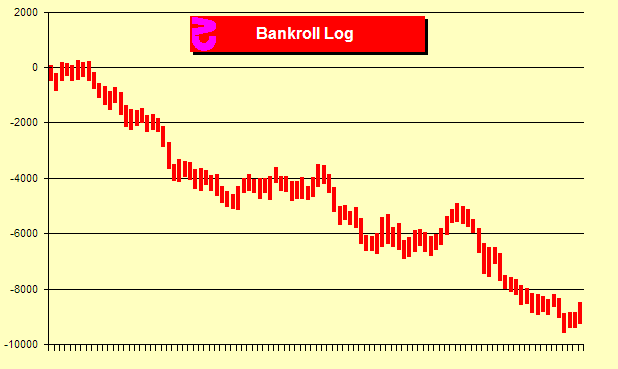|
|
Positive Progression Long Term vs. Short Term
 What
does a positive progression look like? What
does a positive progression look like?
These charts are much like the set of charts on long
term vs. short term, except they are for a positive progression
player. These charts are modeled after the progression found in
21st Century Blackjack by Walter Thomason. There are four
charts on this page displaying results starting with the short term
(1,000 hands) and moving through successively longer terms (up to
a million hands). The 1,000 hands in this chart are displayed in
100 groups of ten hands each. Each group of ten hands is a vertical
line showing the minimum and maximum overall result from the start
of the chart during those ten hands. What we see is fairly random
movement. We win at first, then generally move down and after a
while nearly make it back to even after about 900 hands.
|
|

Now we move to 10,000 hands in groups of 100. Here we see that
the player actually made his money back and turned a profit after
1,400 hands. But then started a downward fall.
|
|

Let's expand this to 100,000 hands in groups of 1,000. We see the
y-axis has expanded as our results in this section range from 1,000
units behind to 200 units ahead. Here we see that after 28,000 hands
the player is ahead again. And again after 50,000 hands the player
is ahead a couple more times. After this we fall quite a bit behind.
|
|

Finally, 1,000,000 hands in groups of 10,000. Here we start to see
the long run. We start at zero units won and after several points
where we turned a profit, we end up losing 9,000 units. The line
is smoother as we are looking at more hands, but we still see periods
of increasing bankroll at this resolution. If this were expanded
to 100,000,000 hands you would see a nearly straight downward slope.
Normal standard deviation allows just about anything to happen in
the short term and a Basic Strategy player's results would not look
much different.
Of course this is just one run. Other runs will see the swings
at different points and of different sizes. Some groups of 50,000
hands will win and some will lose. But, the house edge is still
the same as flat betting. At any specific number of hands, the average
expected loss will be the house edge times the number of bets. Unlike
the card counter's results at long
term vs. short term, the trend is down.
|
Sim details
- Six decks, S17, DAS, 4.8/6 penetration, 1 player, Basic Strategy,
Positive 2, 3, 4, 5 progression.
- One million rounds
|
|
|
 What
does a positive progression look like?
What
does a positive progression look like?

